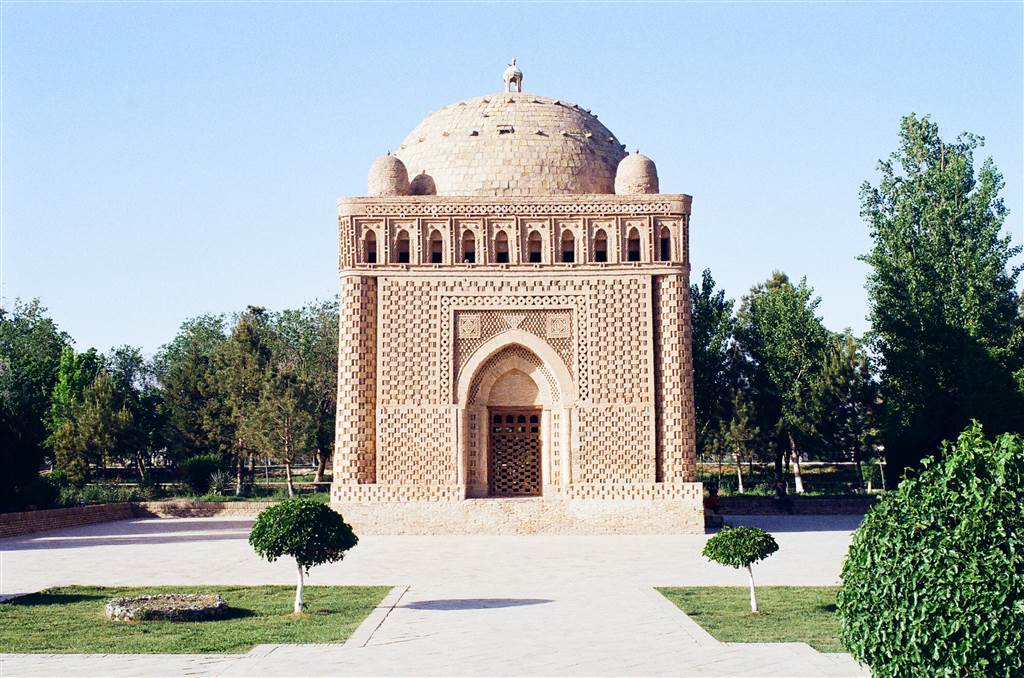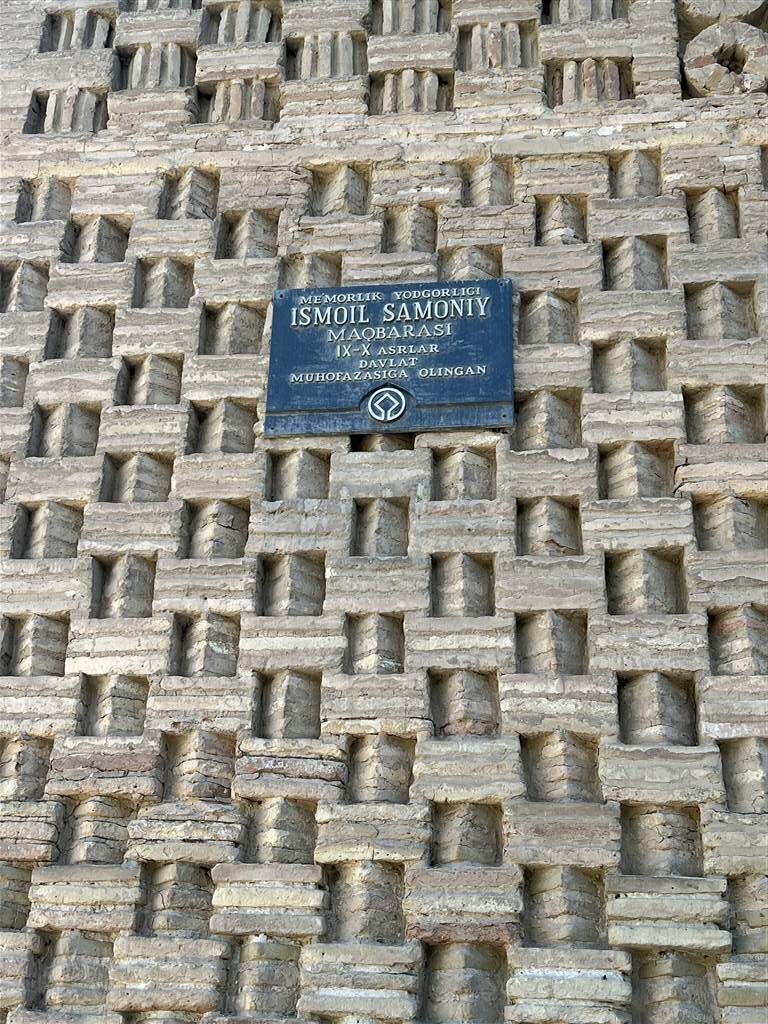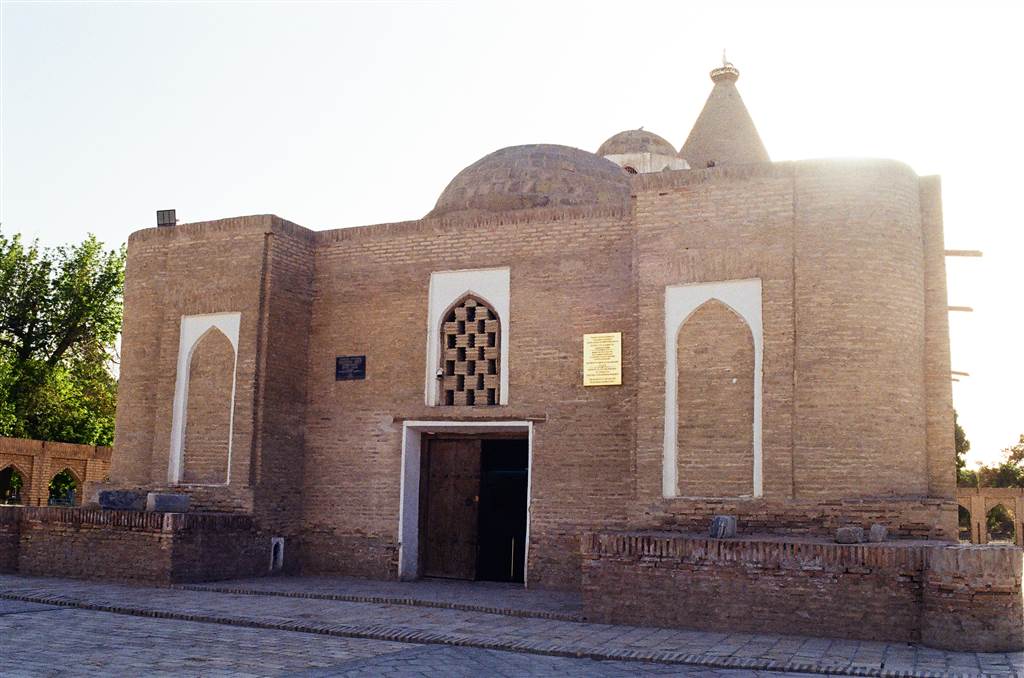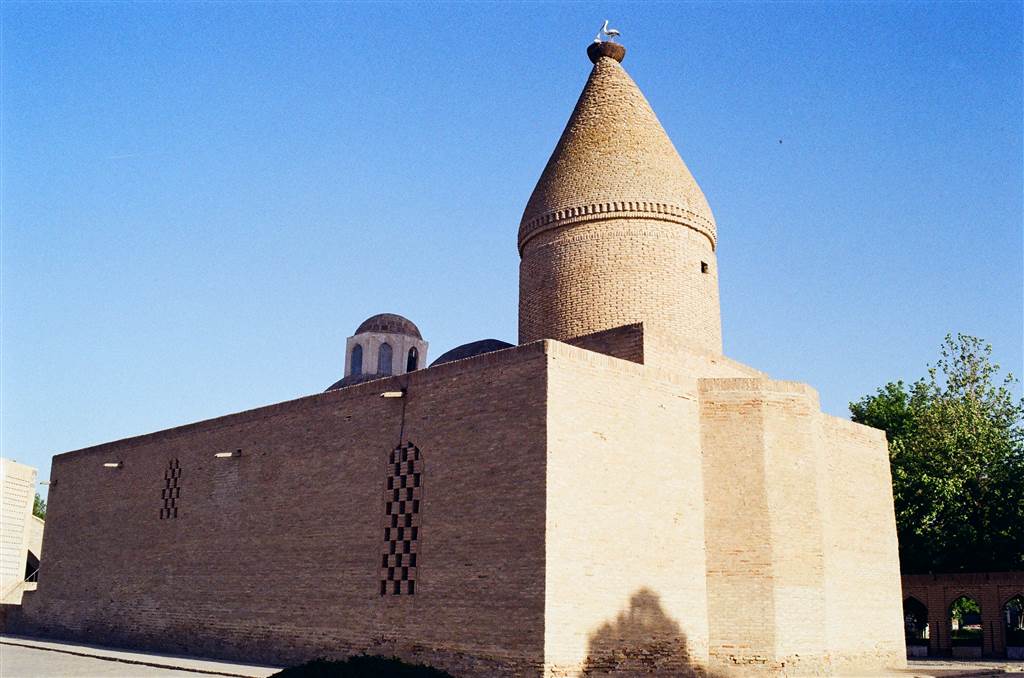Ubiquitously Uzbekistan – The Ismail Samani Mausoleum

We relaxed and shopped a bit at the Sitorai Mokhi Khosa. Dusk would befall upon us soon so we hurried and got a taxi to get to the Samani Park. We would be seeing the Ismail Samani Mausoleum as the final sightseeing in Bukhara on this trip.
The Ismail Samani Mausoleum
The Samanid Rule of Bukhara

The Ismail Samani Mausoleum is the site of burial for the founder of the Samanid dynasty, a period of time considered to be one of the most glorious throughout Uzbekistan’s antiquity. The Samanids were Persian aristocracy with origin from Iran. They were one of the “first purely indigenous dynasties to rule in Persia following the Muslim Arab conquest.” (Encyclopedia.com) The reign lasted between 819-1005 A.D.
Ismail Samanid, the great-grandson of Saman-Khuda, was the one that strengthened the ruling of the Samanids by uniting all the Samanid states into one empire. Under the Samanids, the capital of Bukhara and the city of Samarkand became the centers of Persian culture, as the Samanids were patrons of science, literature, the arts and religion. It is said that Bukhara under the Samanid rule had a glory that rivaled that of Baghdad.
The History of the Ismail Samani Mausoleum
Unlike so many of the monuments in Uzbekistan, the Ismail Samani Mausoleum did not have to go through a complete reconstruction in the modern times. For many of Uzbekistan’s monuments, the near-wholesale destruction of the original structure by wars or earthquakes necessitated a complete rebuilding.
The reason being that, when the Mongols invaded Bukhara in the 13th century, the Ismail Samani Mausoleum was buried both far in the ebbs of time and also in the depths of the Bukharan desert. The powerful forces of nature saved the Ismail Samani Mausoleum from the traumas of human-originated disasters. As such it is the oldest Islamic monument in Bukhara, constructed in the early 10th century.
Architectural Features of the Ismail Samani Mausoleum

Although it may have looked a bit plain at first glance, the Ismail Samani Mausoleum presents an aesthetics that is miles apart from all the other historic structures that we saw in Uzbekistan. There was no adornment in this firebrick structure. The Ismail Samani Mausoleum was truly different from the elaborate colors that grace the traditional Uzbek monuments with turquoise domes and mosaic-laden iwans — much less anything that resembled the somewhat contrived efforts to implant Russian-styled architecture like that of the Sitorai Mokhi Khosa. It was a very nice change of scenery for us.
The lack of colors and mosaics does not stop one from appreciating the beauty of Ismail Samani Mausoleum. The intricacy lies in the fascinating layout of the brickwork, in perfectly uniform geometrics. Sohpie Ibbotson explains as follows, “striking in its simplicity, the design incorporates aspects of Sogdian architecture, newer mathematical developments and even Sassanid fire temples. The cubic shape harks back to the Kaaba in the Masjid al-Haram in Mecca, and the dome above it represents the heavens.” (at 237) I have no idea what these cultural and historical references mean, but suffice to say that the workmanship showed incredible meticulousness. It is no less a work of art than any other heritage sites we have seen.
The Ismail Samani Mausoleum was rediscovered again only in the 20th century. Soviet archaeologists discovered and excavated the ruins in 1930. Reconstruction was only necessary for the dome.
An entrance fee is required for entering the Ismail Samani Mausoleum.
Two Other Sites of Significance in the Samani Park
The Chashma Ayub Mausoleum

The site on which the Chashma Ayub Mausoleum was built is sacred. It is believed that the Prophet Job “struck the arid ground and a spring of pure drinking water miraculously burst forth.” (Ibbotson at 236) (reminiscent of Moses doing the same during the 40-year wandering in the wilderness by the Israelites) It is said that the city of Bukhara grew up around this very holy site.

The Chashma Ayub Mausoleum, like the Ismail Samnai Mausoleum, is also a plain brick structure. Perhaps the notable architectural features of this mausoleum are the three domes, each having unique appearance. They belonged to different periods of time. The dome with the pointed conical top is considered atypical for this part of the Islamic world. It may have been derived “from the roof of a Khorezmian nomads’ tent.” (Ibbotson at 237)

The very first mausoleum was built in the 11th century, but the current structure was the work of Amir Timur in 1380. There seems to be no confirmation of the identity of the person that lies in the tomb inside.
The Memorial to Imam Al-Bukhari

This Memorial is a modern construction that commemorates the imam Al-Bukhari that was born in the 1st century. His notable achievement in Islam included his collection of 97 volumes of Hadiths.
A quick tour of the group of mausoleums at the Samani Park took less than an hour.
Sources
Sophie Ibbotson, Uzbekistan, Bradt Travel Guide (2020).
The Wikipedia on the Samanid Empire.
Encyclopedia.com on the Samanid.
